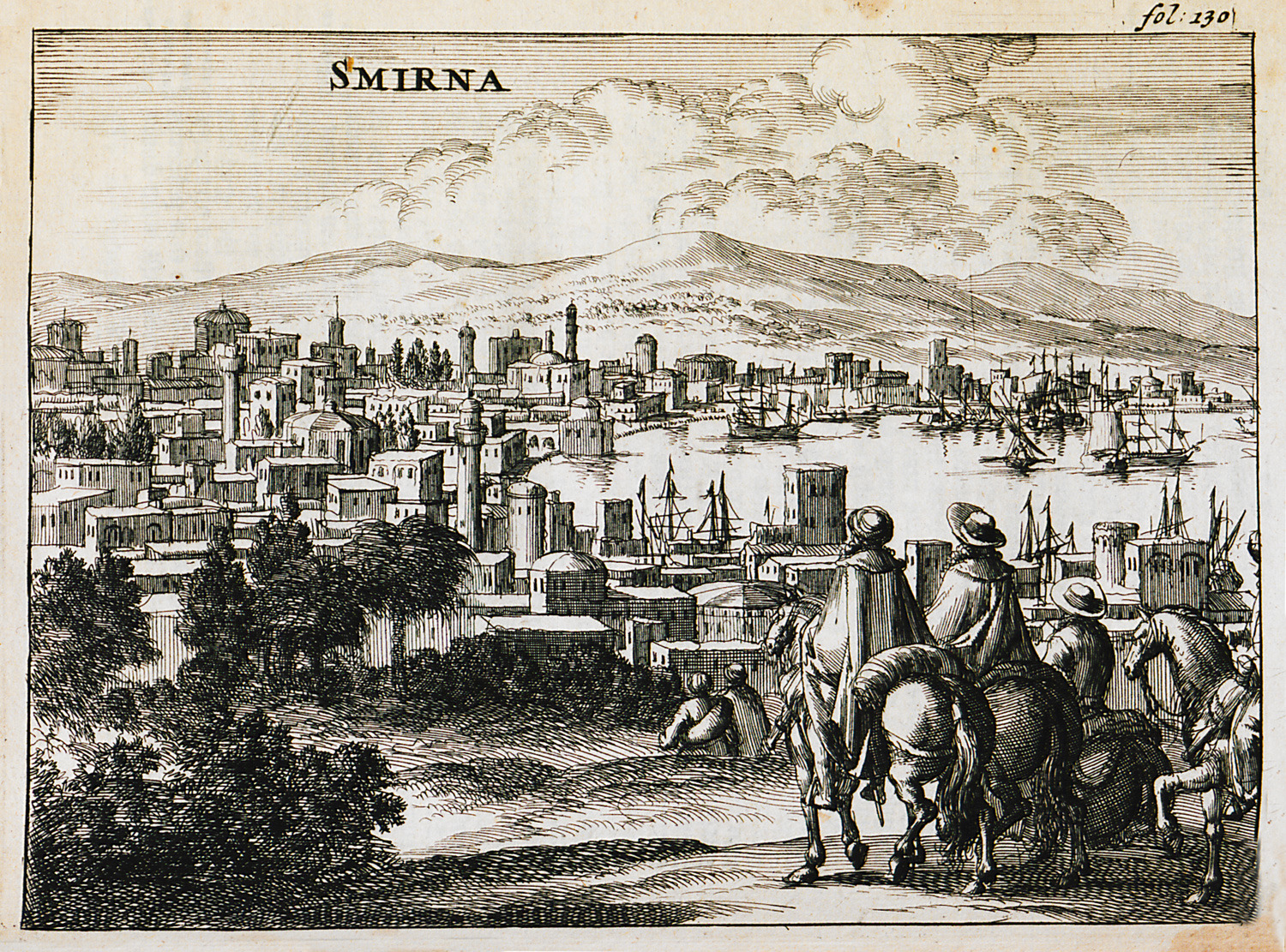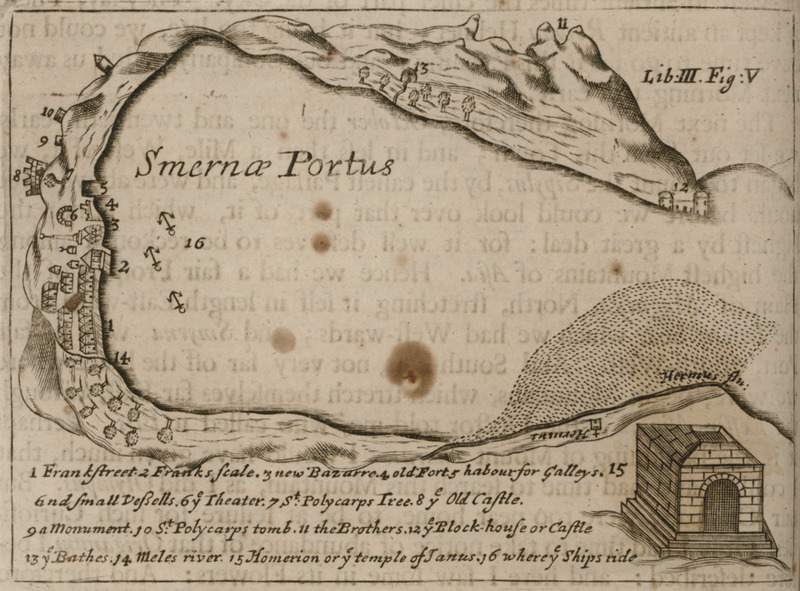Saint Polycarp of Smyrna in travel texts and Smyrnaic editions from the Collection of the Gennadius Library
On February 23, Smyrna offers special honors to Saint Polycarp, a disciple of Saint John the Theologian, who is considered the first bishop of the city (in the 2nd century A.D.). His importance for early Christianity is great, as he belongs to that special group of saints called 'apostolic fathers', and they are the connecting link between the Apostles and the first Christian communities. The story of his martyrdom, the 'Martyrdom of Polycarp', is the first such text after the description of St. Stephen's martyrdom in the New Testament (Acts of the Apostles).
The people of Smyrna proudly pointed to the place where his tomb and place of martyrdom were traditionally thought to be. European travelers do not fail to mention it in their descriptions, as the Church of Smyrna was one of the Seven Churches of the Apocalypse, an attraction for any Christian traveler.
Jacob Spon (1647-1685) who traveled to Smyrna between 1675 and 1676 wrote: "The interior of this ruined fortress (Katifekale) is only a large pile of stones. There is also a small mosque which is said to have been the ancient metropolitan church dedicated to Saint John. We see in the vestibule two columns of the Corinthian style, but in the most beautiful way, which is found in the works of the Ancients. Near the mosque there is a large dome supported by exceptionally large pillars. I thought it was a cistern because there were no springs on this acropolis. A little further down, outside its walls, you can see the ruins of a chapel dedicated to Saint Polycarp and the ruins of his tomb, where there is nothing important. It is near a beautiful and large stadium, about two hundred and fifty paces in length and forty-five in breadth.'
J. Spon, Voyage d'Italie, de Dalmatie, de Grece, et du Levant, fait aux années 1675 et 1676, I, Lyon 1678, 306-307.

George Wheler (1650-1723), who traveled with Spon, is more eloquent in his description: “(...) at that time this church was as a noble army of martyrs, whose Saint Polycarp, their Shepherd, as their leader, was martyred either in the theater or in the stadium, eaten by wild beasts. His tomb remains on the hill, which lies on the north side of the stadium, and is visited with great devotion: But his true glory is on high. These Christians still remain important, and in a far better condition, than any of the rest of these Seven Churches.
(G. Wheller, A journey into Greece / by George Wheler ... With variety of sculptures, London 1682, 240 (plan), 245, 247).

The respect that the Smyrna community paid to Saint Polycarp is also evident in the early modern period. In 1886, the “Amalthia” printing house in Smyrna published the Akolouthia of the holy fathers Boukolos and Polycarp, bishops of Smyrna. In 1911, the Metropolitan Chrysostom of Smyrna published "Saint Polycarp", an illustrated weekly religious magazine. A copy is on view at the Gennadius Library exhibition, "Books of Asia Minor. Cultural Traces of Asia Minor Hellenism [1764-1922]».
Finally, testimonies of residents of the city before 1922 mention as a favorite saying of Chrysostom of Smyrna the phrase from the Apocalypse of Saint John, teacher of St. Polycarp, when he addressed the church of Smyrna, "be faithful unto death and I will give you the crown of life" (Revelation 2 :10).